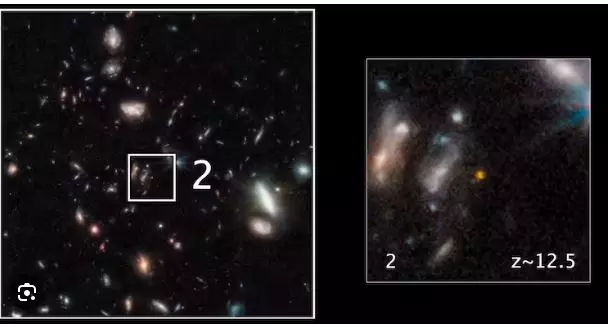
James Webb Space Telescope reveals distant galactic marvels in Pandora's cluster
text_fieldsScientists utilizing the James Webb Space Telescope have uncovered the second and fourth-most distant galaxies in the vast expanse of space within Pandora's cluster. The galaxies, situated an astonishing 33 billion light-years away, are offering unprecedented insights into the formation of the earliest galaxies and the evolution of our cosmos.
Peanuts and Fluffy Balls:
Unlike their distant counterparts, which typically appear as faint red dots in images, these newly discovered galaxies are described by researchers as resembling a "peanut and a fluffy ball." This distinctive appearance adds a unique dimension to our understanding of the cosmic tapestry.
Time Capsule from the Past:
The light detected by the James Webb Space Telescope originated from these galaxies approximately 13.4 billion light-years ago, when the universe was a mere 330 million years old. The current distance of 33 billion light-years is a testament to the universe's expansion over time, providing a remarkable glimpse into the distant past.
Gravitational Lensing Unveiled:
The telescope captured deep-field images of Pandora's cluster in 2022, revealing over 60,000 sources of light. The selected region behind numerous galaxies facilitated a phenomenon known as gravitational lensing, where the gravitational pull of foreground galaxies acts as a magnifying glass, warping and bending light from behind.
Computational Insights:
In addition to the observational data, researchers employed advanced computational models to unveil the properties of these early galaxies. As anticipated, the two galaxies exhibited youthful characteristics, with minimal metal content in their composition. They are actively and rapidly forming stars, providing a snapshot of the dynamic processes at play in the early universe.
Gateway to the Past:
This ground-breaking discovery not only expands our understanding of the universe's infancy but also serves as a testament to the capabilities of the James Webb Space Telescope. The ability to peer into the depths of space and unravel the mysteries of distant galaxies positions humanity on the frontier of cosmic exploration, opening a gateway to the past and unlocking the secrets of our celestial origins.
Implications for the Future:
As scientists delve deeper into the data from Pandora's cluster, the hope is that these distant galaxies will continue to offer crucial insights into the fundamental questions surrounding the origins and evolution of the cosmos.























